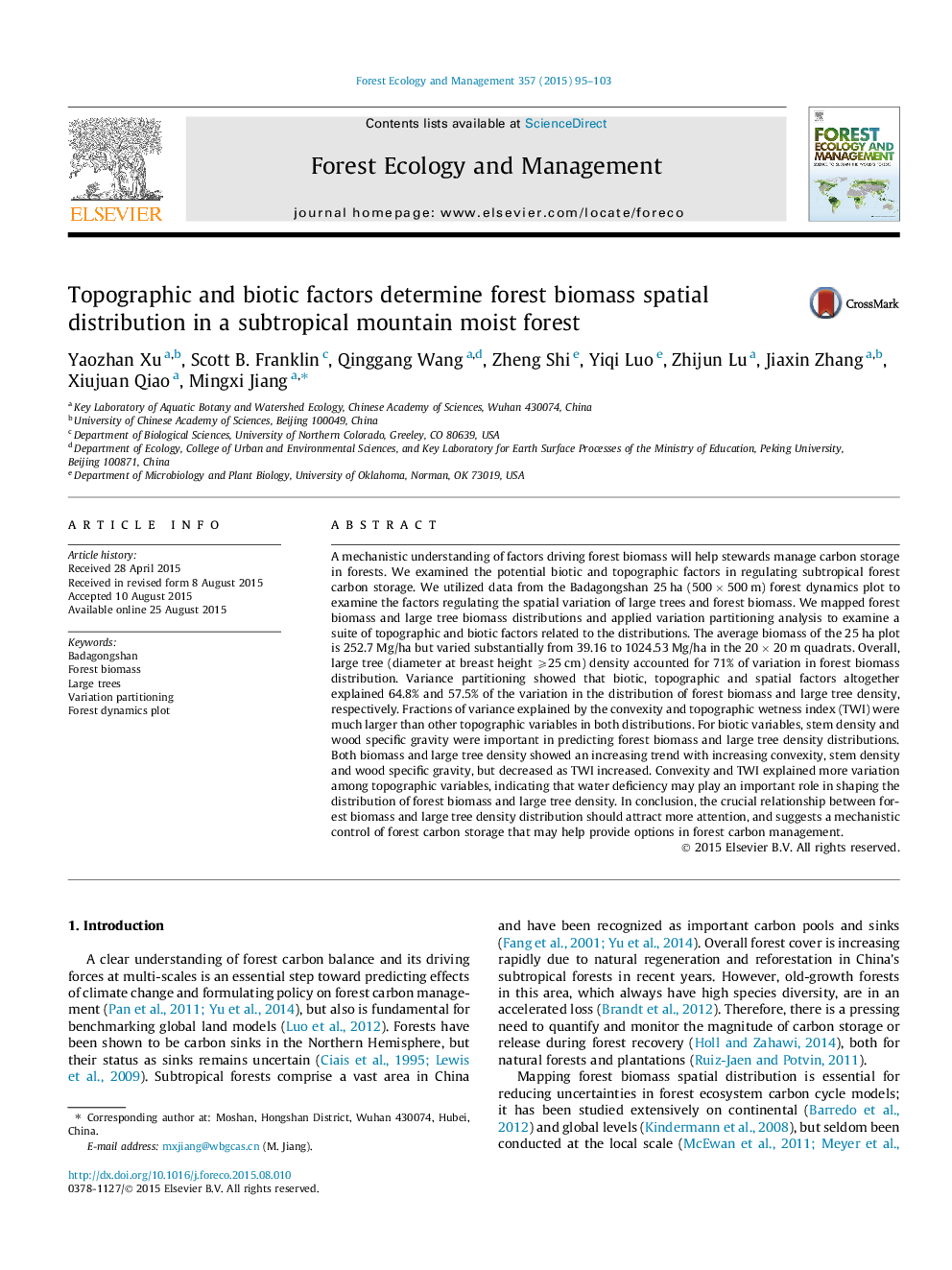| کد مقاله | کد نشریه | سال انتشار | مقاله انگلیسی | نسخه تمام متن |
|---|---|---|---|---|
| 6542698 | 159170 | 2015 | 9 صفحه PDF | دانلود رایگان |
عنوان انگلیسی مقاله ISI
Topographic and biotic factors determine forest biomass spatial distribution in a subtropical mountain moist forest
ترجمه فارسی عنوان
عوامل توپوگرافی و زیست شناختی توزیع فضایی زیست توده جنگل در جنگل های مرطوب کوهستانی نیمه گرمسیری را تعیین می کنند
دانلود مقاله + سفارش ترجمه
دانلود مقاله ISI انگلیسی
رایگان برای ایرانیان
کلمات کلیدی
بندهگنگان، زیست توده جنگل، درختان بزرگ، تقسیم بندی متغیر، طرح پویایی جنگل،
موضوعات مرتبط
علوم زیستی و بیوفناوری
علوم کشاورزی و بیولوژیک
بوم شناسی، تکامل، رفتار و سامانه شناسی
چکیده انگلیسی
A mechanistic understanding of factors driving forest biomass will help stewards manage carbon storage in forests. We examined the potential biotic and topographic factors in regulating subtropical forest carbon storage. We utilized data from the Badagongshan 25 ha (500 Ã 500 m) forest dynamics plot to examine the factors regulating the spatial variation of large trees and forest biomass. We mapped forest biomass and large tree biomass distributions and applied variation partitioning analysis to examine a suite of topographic and biotic factors related to the distributions. The average biomass of the 25 ha plot is 252.7 Mg/ha but varied substantially from 39.16 to 1024.53 Mg/ha in the 20 Ã 20 m quadrats. Overall, large tree (diameter at breast height ⩾25 cm) density accounted for 71% of variation in forest biomass distribution. Variance partitioning showed that biotic, topographic and spatial factors altogether explained 64.8% and 57.5% of the variation in the distribution of forest biomass and large tree density, respectively. Fractions of variance explained by the convexity and topographic wetness index (TWI) were much larger than other topographic variables in both distributions. For biotic variables, stem density and wood specific gravity were important in predicting forest biomass and large tree density distributions. Both biomass and large tree density showed an increasing trend with increasing convexity, stem density and wood specific gravity, but decreased as TWI increased. Convexity and TWI explained more variation among topographic variables, indicating that water deficiency may play an important role in shaping the distribution of forest biomass and large tree density. In conclusion, the crucial relationship between forest biomass and large tree density distribution should attract more attention, and suggests a mechanistic control of forest carbon storage that may help provide options in forest carbon management.
ناشر
Database: Elsevier - ScienceDirect (ساینس دایرکت)
Journal: Forest Ecology and Management - Volume 357, 1 December 2015, Pages 95-103
Journal: Forest Ecology and Management - Volume 357, 1 December 2015, Pages 95-103
نویسندگان
Yaozhan Xu, Scott B. Franklin, Qinggang Wang, Zheng Shi, Yiqi Luo, Zhijun Lu, Jiaxin Zhang, Xiujuan Qiao, Mingxi Jiang,
